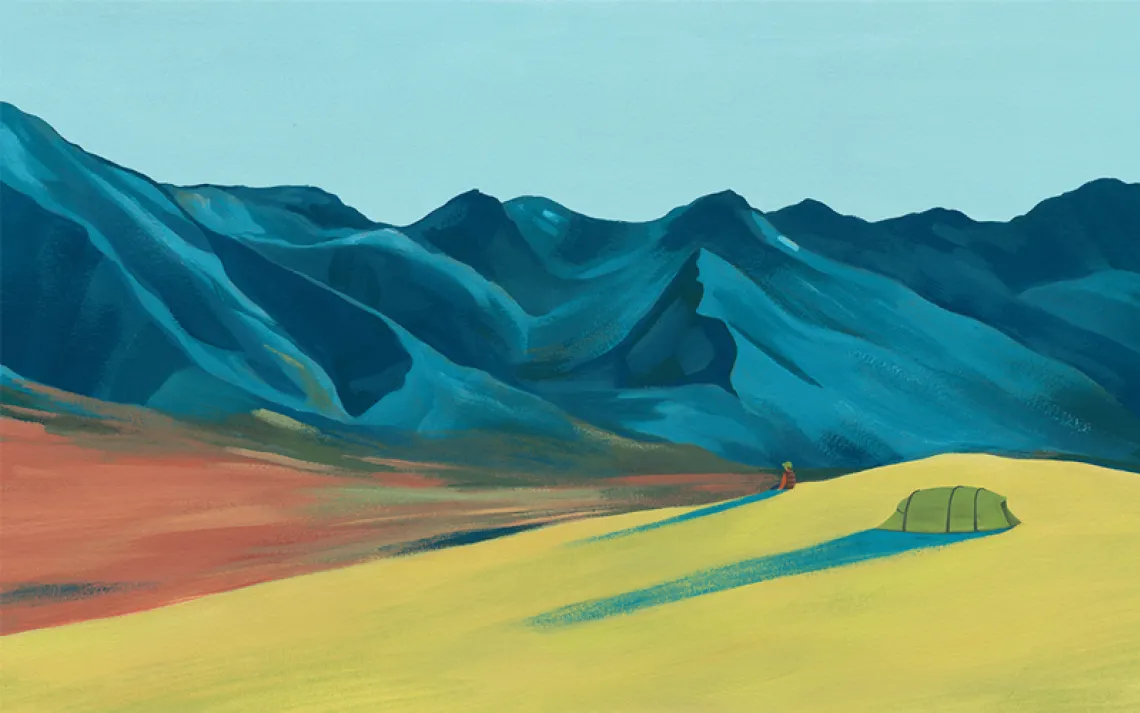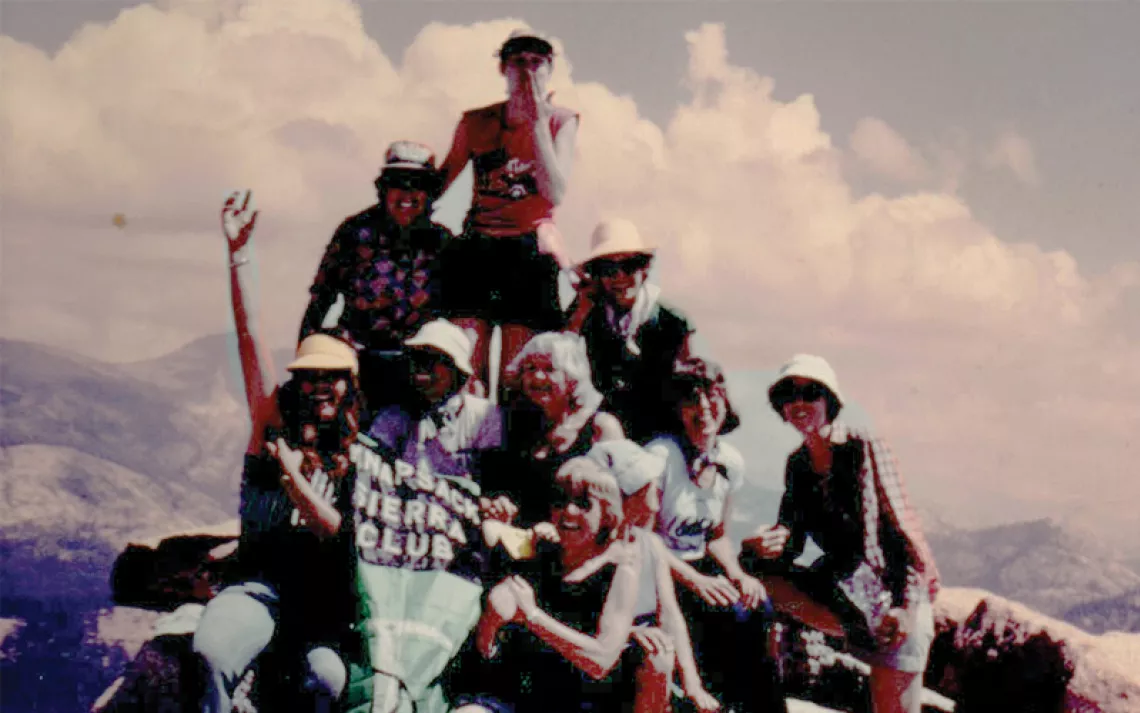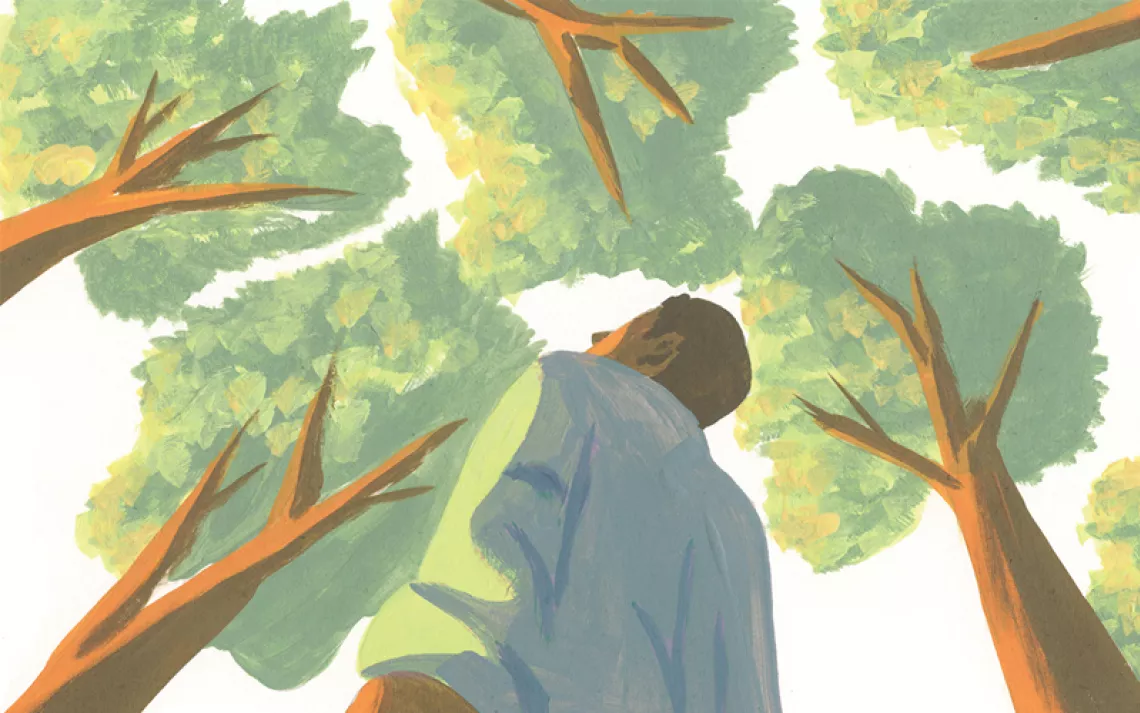What’s It Like to Come Back From a Year in the Boundary Waters Wilderness?
“The biggest challenge was falling asleep inside”
Photos courtesy of Dave Freeman
In late September 2015, Amy and Dave Freeman embarked on a dream excursion to spend 365 days in Minnesota’s Boundary Waters Canoe Area Wilderness. Part of their trip was included in Conor Mihell’s “Borderline Wilderness” in the November/December 2016 issue of Sierra. The Freemans hoped to draw attention to the threat posed to America’s most popular federal wilderness by proposed copper and nickel mines on its outskirts; late last year, the Trump administration quietly renewed leases owned by a Chilean mining company, a principal for which happened to be Jared Kushner and Ivanka Trump’s landlord.
This selection comes from the end of their new book, A Year in the Wilderness, after the Freemans had completed their year in the Boundary Waters.
*
 The night after exiting the Boundary Waters, we found ourselves enclosed by four walls, lying in a bed, staring at the ceiling. How could anyone sleep like this? The hum of a dehumidifier—what one typically thinks of as innocuous white noise—was jarring and foreign, and it set us on edge. Not able to hear the wind, we worried about the canoe we had left on the beach. Only after securing the canoe and opening the window, letting in a gentle breeze and the sound of rustling leaves, did we finally drift off to sleep.
The night after exiting the Boundary Waters, we found ourselves enclosed by four walls, lying in a bed, staring at the ceiling. How could anyone sleep like this? The hum of a dehumidifier—what one typically thinks of as innocuous white noise—was jarring and foreign, and it set us on edge. Not able to hear the wind, we worried about the canoe we had left on the beach. Only after securing the canoe and opening the window, letting in a gentle breeze and the sound of rustling leaves, did we finally drift off to sleep.
Within 72 hours we had boarded an airplane bound for Washington, D.C., to advocate for the Boundary Waters in a different way, meeting face to face with our elected officials. Moving through the air at five hundred miles per hour was mind-boggling in comparison to the pace we had become accustomed to in our canoe.
Many trips by car and plane followed over the next six months. We gave dozens of presentations in seven states. Almost every time someone asked, “What’s it like to be back in society?” Or, “How are you adjusting?” Our typical answer—“It’s been kind of tough, but we’re used to it now”—doesn’t begin to address how challenging the readjustment had been for us. We took to calling it recompression, because it is the polar opposite of decompression—what most people experience when they visit the Boundary Waters. As we recompressed we were affected in ways we hadn’t anticipated. The biggest challenge, as on that first night, was getting used to falling asleep inside. Our internal clocks were confused by artificial light, and our bodies had adapted to the routine of the trail, our senses so attuned to the woods that sleeping indoors felt unnatural. It took several weeks for us to grow accustomed to being cut off from the sounds of wind rustling in the trees and water lapping against the shore—and no longer smelling freshly fallen pine needles in the duff or the onset of rain.
We were occasionally taken aback by the absurdity of this world of cars, fluorescent lights, and concrete. Turning on a faucet to get a drink of water, we wondered where it came from, the filtration system and the network of pipes it had traveled through to fill our glass, as we remembered simply dipping water bottles over the side of our canoe. In grocery stores we were intimidated by the seemingly endless possibilities for what we could purchase and prepare for dinner. And we found ourselves taking breaks outside crowded rooms. We would prepare ourselves for presentations and events, and balanced those commitments with time spent going for a walk or a run whenever possible.
Just the thought of returning to the wilderness creates a wave of relief, though. Like two-month-old Kit Shirley, humans are hardwired to be in nature. As one takes a walk in the woods or goes on a weekend camping trip, the blood pressure drops, the prefrontal cortex settles down, and cortisol levels drop. Even a memory from the year we spent in the Boundary Waters can lower our heart rates. The scent of wet earth reminds us of what is important. Fox tracks in the snow or the sound of chickadees grounds us. A run on a wooded trail or watching rain drip through pine branches outside our window allows for a brief escape.
We bore witness to the Boundary Waters Canoe Area Wilderness in every season and came away with a better understanding of its inner workings. Whether one cares to admit it or not, we are tied to the land and dependent on it for our survival. The fight over conservation will continue between those who understand this concept and those who only see land for the commercial value of the resources it contains.
Our year in the Wilderness heightened our senses and pushed us to slow down, live in the moment, and see how precious the wild oases that remain on Earth are to humanity and all life. It has become painfully clear that in an age when humans are more disconnected from nature than ever, the future of our species and the ecosystems that support us will be endangered if wilderness is lost. Wilderness is the earth’s DNA unaltered, a window into the complex framework of air, water, climate, soil, and nutrients that sustain all life. Wilderness nourishes our souls and is the North Star guiding us toward a sustainable future. We must not lose sight of its value, and we must speak loudly for these quiet places.
From A Year in the Wilderness by Amy and Dave Freeman (Minneapolis: Milkweed Editions, 2017). Copyright © 2017 by Amy and Dave Freeman. Reprinted with permission from Milkweed Editions, milkweed.org.
 The Magazine of The Sierra Club
The Magazine of The Sierra Club









